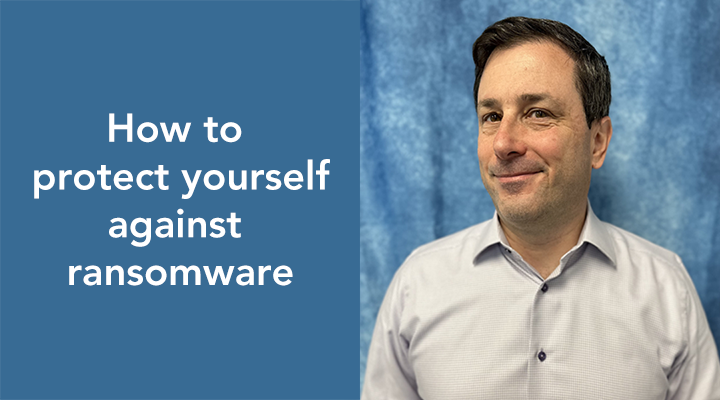Most CEOs would never delegate financial oversight without regular check-ins. Yet, many are completely hands-off when it comes to cybersecurity — a risk category that can sink a company’s reputation, cripple operations, and vaporize customer trust overnight. If you’re not at least a little cyber-nervous, it’s time to take a closer look.
Why CEOs Should Be Cyber-Nervous
- The buck stops with you. Cybersecurity isn’t just an IT problem — it’s a business risk with executive-level consequences.
- Cyber threats are rising. Ransomware, phishing, insider threats, and supply chain attacks are growing more frequent and more sophisticated.
- SMBs are no longer “too small to target.” In fact, small and medium-sized businesses are often easier targets due to weaker defenses.
- Insurance is not a safety net. Cyber insurance is getting harder to qualify for and often doesn’t cover reputational damage or loss of customer trust.
- Regulatory and legal risks. New data privacy laws and compliance frameworks are expanding, and failure to comply can cost millions.
- Your company’s value is on the line. One breach can wipe out years of goodwill and weaken your position in negotiations, funding, or M&A scenarios.
What Cyber-Responsible CEOs Do Differently
- They ask STRATEGIC questions, not technical ones.
- They stay INFORMED enough to evaluate risk and ensure accountability.
- They require CLARITY from internal and external IT leaders.
- They treat cybersecurity as an INVESTMENT, not an expense.
10 Questions Every CEO Should Ask About Cybersecurity
These aren’t technical questions — they’re leadership questions. The answers will help you assess your company’s real readiness.
- If we had a ransomware attack today, what’s the first thing we’d do?I always advise leaders that the best response plan is the one created before the crisis. That plan should include who’s in charge, who’s authorized to make decisions, and how we’re going to communicate internally and externally — especially if systems are down. I can tell you from working with all kinds of clients: companies that prepare in advance recover faster, spend less, and take less reputational damage. Ransomware is like a major car accident. A response plan is your seatbelt. You can do the math.
- When was the last time we tested our backup and recovery systems?I don’t just ask if backups exist — I ask when they were last tested. Because I’ve seen companies with perfect-looking backups that failed during recovery. I always recommend CEOs get one clear answer: if everything failed today, how long until we’re fully back up? If that answer’s vague or unconvincing, your business continuity is at risk.
- What cybersecurity risks keeps us up at night — and what are we doing about them?One of the best ways to get honest insight is to ask this question directly. I’ve seen this cut through layers of polite reporting. The truth is, your internal IT person or provider knows where your blind spots are — they just need permission to say it out loud. And if they don’t seem to be worried about anything, that should keep you up at night.
- What employee training is in place to prevent phishing and social engineering?Most breaches I’ve seen didn’t come through a firewall — they came through a click. I always push for mandatory, realistic phishing training. If your team doesn’t know how to spot a malicious email or a fake login page, you’re exposed. Trust me, you’d rather your people learn from a training simulation than from a mistake that threatens your company’s survival.
- How are we protecting sensitive customer and company data?I always ask, “What counts as sensitive data in your company?” You’d be amazed how often that hasn’t been defined. Only when you know what you’re protecting can you talk about solutions like encryption, access controls, and secure storage. My advice to CEOs: if you wouldn’t want a competitor or customer to see it, you’d better make sure it’s locked down.
- What security protections are in place for remote workers and company-owned devices?The shift to remote work broke a lot of traditional protections. I always ask how laptops are being monitored and whether company data is being accessed securely from home or hotels. If your remote team can log in from a coffee shop without a VPN or endpoint security, you’ve got significant risk.
- What third-party vendors have access to our systems or data, and how do we vet them?This one gets overlooked all the time — but in some of the breaches I’ve investigated, the entry point was a trusted vendor. If your payroll processor, billing service, or cloud app gets compromised, so do you. I advise clients to vet vendors’ security as carefully as they’d vet a financial partner. Because their exposure becomes yours.
- When was our last cybersecurity assessment or audit?A cybersecurity checkup isn’t a one-and-done. I recommend at least one formal assessment a year — and more frequent reviews if there’s been growth, turnover, or tech changes. Internal teams sometimes miss what an outsider can catch. I’ve seen external assessments prevent six-figure problems by surfacing vulnerabilities no one knew were there.
- Do we meet the cybersecurity requirements for our industry and cyber insurance policy?Insurance providers are getting tougher, and regulators aren’t far behind. I’ve had clients denied coverage or payouts because they didn’t meet requirements in the fine print. So, I recommend a review, not just of your controls, but of the policy itself. For example, if your insurance coverage assumes MFA (multi-factor authentication) and you haven’t enforced it, you’re flying without a parachute.
- If you had more budget, what would you fix first?This is the tell. I always ask IT leads this when I consult, and it’s where you get the clearest insight into where your vulnerabilities live. If your IT person says they’re all set and don’t need anything, I’d start asking more questions. There’s always something worth improving — and this question reveals what they think matters most.
What to Do with the Answers
- If your IT team can’t answer confidently, that’s a red flag.
- If you hear jargon instead of clarity, ask for plain-language summaries.
- If you discover gaps, act fast — not with panic, but with purpose.
A strong cybersecurity posture isn’t just a defense mechanism. It’s a competitive advantage, a trust-builder, and an essential component of your company’s value.
In Closing…
Cyber-nervousness isn’t the same as paranoia — it’s responsible leadership when managing a dynamic risk frontier.
Start by talking to your internal technology lead or your external IT services provider. Ask the hard questions. If the answers are vague, inconsistent, or overly technical without clarity, that’s a signal: it’s time to dig deeper.
If you’re not sure where to begin, I recommend reaching out to a reputable local IT service provider — someone independent of your internal setup. They can run a professional scan of your systems and give you a plain-language report of the vulnerabilities a hacker could exploit. That report becomes your action plan: a roadmap to securing your company’s systems, reputation, and future.
If you’re a CEO, you don’t have to become a cybersecurity expert. But you do have to lead like one.
— — —
Pictured: Which of the people behind me in this coffee shop are getting hacked? Catching up on emails in public is just one way a company becomes vulnerable to cyber threats.




